Choosing between a mid-size or compact crossover can be confusing.
Many consumers aren’t aware of the differences between a brand’s different models, which are usually very similar in both size and price, making the car buying experience a daunting task for those who don’t know exactly what they want.
SEE ALSO: Toyota Camry vs Corolla: Which Sedan is Right For You?
In this post, we’re going to explain the key differences between two of the most popular crossovers in North America, the Honda CR-V and the Honda HR-V.
Both of these crossovers look similar and aren’t too far off each other in price, but they are two very different packages with two different customers in mind, so let’s see which one is right for you.
Body Styles/Design
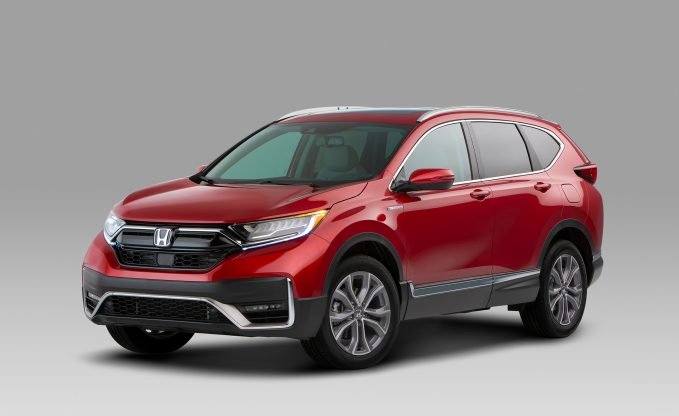
2020 Honda CR-V Hybrid
Honda CR-V: the current generation Honda CR-V has always had a youthful and sporty exterior which after the recent facelift only looks sharper. The already busy front-end looks even busier now thanks to the redesigned bumper. The rear with its L-shaped taillamps retains its relative simplicity.
Honda HR-V: the HR-V looks a lot like the CR-V, but is a bit more upright in its proportions due to its smaller size. It also features Honda’s youthful front end but is easily recognizable as the HR-V thanks to the vertically mounted rear door handles. The rear features pointed taillights and a rear hatch spoiler.
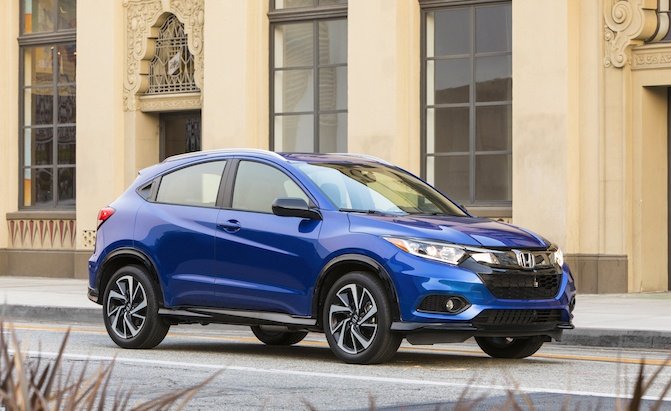
Bottom Line: these two crossovers both have Honda’s signature sporty look and look quite similar. If you like the styling of one, you’ll probably like the styling of the other. The CR-V is a bit more mature-looking, though, and is probably more appropriate for older buyers.
ALSO SEE: Honda CR-V Pros and Cons
Space/Practicality
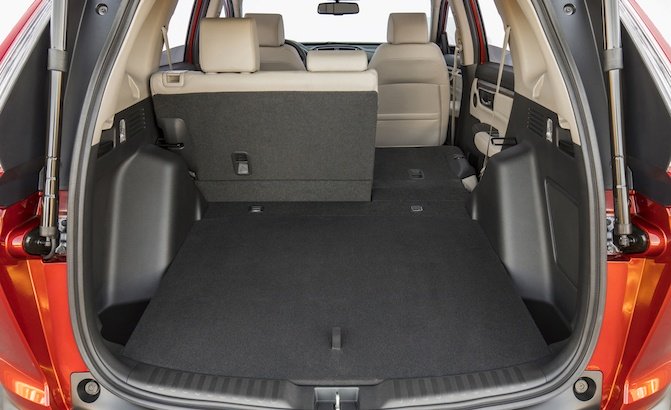
CR-V: the CR-V is a midsize crossover whereas the HR-V is a compact, so obviously the CR-V has more room for passengers and cargo. The CR-V has 39.2 cu-ft of cargo space with the rear seat up and 75.8 cu-ft with it down, along with a total passenger volume of 102.9 cu-ft. With seating for 5, it also has total front legroom of 41.3 inches and rear second-row legroom of 40.4 in.
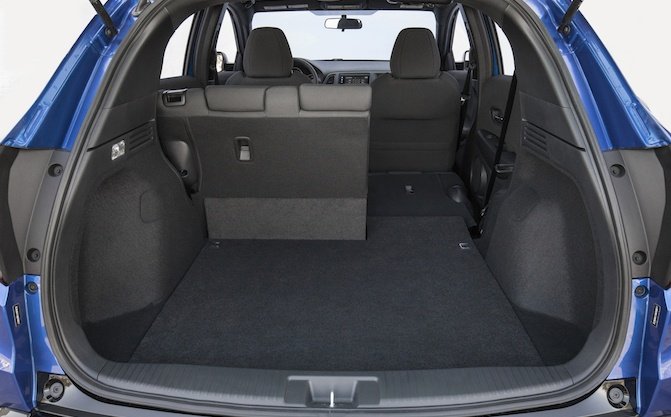
HR-V: the HR-V is the smaller of these two, with 24.3 cu-ft of cargo space with the rear seat up and 58.8 cu-ft with it folded down. Total passenger volume measures in at 100.1 cu-ft, while front legroom is 41.2 in and rear legroom is 39.3 in. The HR-V has an interesting feature the CR-V doesn’t have: Magic Seats. This is a great feature that allows you to flip up the rear seat cushions so you can hold taller items, which gives some added practicality to the smaller HR-V.
Bottom Line: the measurements may seem similar, but the CR-V is a much roomier vehicle. If you frequently use the backseat or need to carry large objects often, the CR-V is probably your best bet. If you frequently drive with just you or one other person in the car, the HR-V may be better suited to your needs.
ALSO SEE: Honda Accord vs Honda Civic: Which Sedan is Right For You?
Powertrains/Fuel Economy
CR-V: After the recent facelift, Honda booted the 2.4-liter powerplant from its CR-V lineup. Instead, the crossover is now powered the 1.5-liter turbocharged 4-cylinder engine only and is only available in one state of tune.
ALSO SEE: Honda CR-V Turbo Problems? You’re Not Alone
The 1.5-liter turbo-four is rated at 190 hp and 179 lb-ft of torque. The engine is offered with a CVT gearbox only but is available as both FWD and all-wheel drive. If you’d rather have a hybrid, there is long wait in store as the hybrid version will not be on sale till summer.
Some CR-V owners experienced problems with this engine in the past. But the problem has since been rectified. For clarity’s sake the problematic model years for the engine were 2016-2018 and the said model year CR-Vs also received extended warranties. So if you are considering a used CR-V you should look thoroughly into the paperwork. Buying new, however, according to Honda will be troublefree.
The EPA rates the FWD CR-V with the 1.5-liter turbo four and CVT automatic transmission at 28 MPG city and 34 MPG for a combined rating of 30 MPG. With all-wheel drive, the turbo motor is rated at 27 MPG city and 33 MPG highway for a combined rating of 29 MPG.
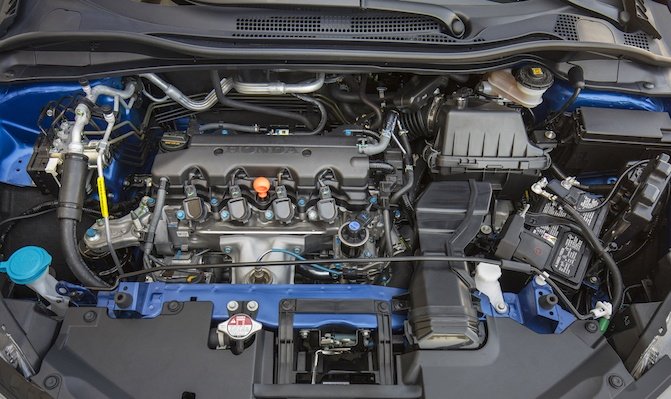
HR-V: the HR-V is only available with one engine: a 1.8-liter four-cylinder rated at 141 hp and 127 lb-ft of torque. There is a turbo engine available in Europe, and we suspect it will make it to North America, eventually. There is now only one transmission choice: a CVT. There used to be and a six-speed manual, which was available on FWD models only, but Honda discontinued it in the U.S. and Canada due to slow sales.
The EPA rates the FWD HR-V with the CVT at 28 MPG city, 34 MPG highway and 31 MPG combined. The HR-V AWD is rated at 27 MPG city and 31 MPG highway for a combined total of 29 MPG.
Bottom Line: Both of these cars have good fuel economy for their respective vehicle segments. We’d steer clear of the CR-V’s 1.5-liter turbo for now and opt for the more reliable 2.4-liter engine with all-wheel drive. The HR-V doesn’t leave much room for choice, but it is still decently powerful and very efficient.
Driving Dynamics
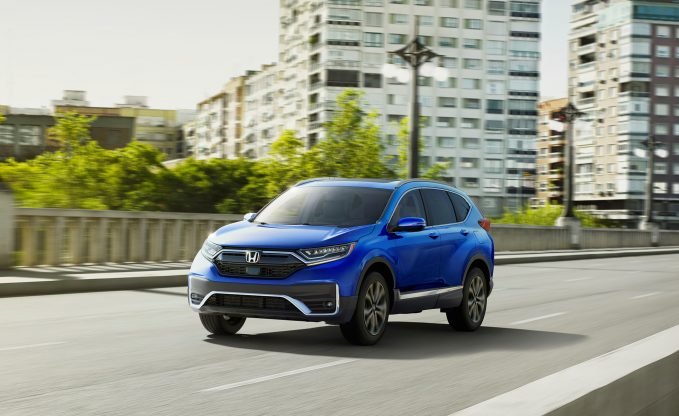
CR-V: Honda knows how to make a car handle, so the CR-V is pretty athletic, all things considered. When we reviewed the CR-V, our editor noted that it was “a little rigid and truck-like,” but that it also had a “tremendously smooth ride aided by its new suspension,” design. We also liked the slightly heavy steering, which was “very nimble and easy on the driver.”
HR-V: the same point about Honda’s chassis tuning know-how applies to the HR-V. Neither of these vehicles will be setting the lap timing screen alight, but they are fairly nimble for what they are. The HR-V isn’t perfect, with our editor finding the steering vague, but more importantly, he found the ride to be comfortable and they liked that it was easy to drive and park.
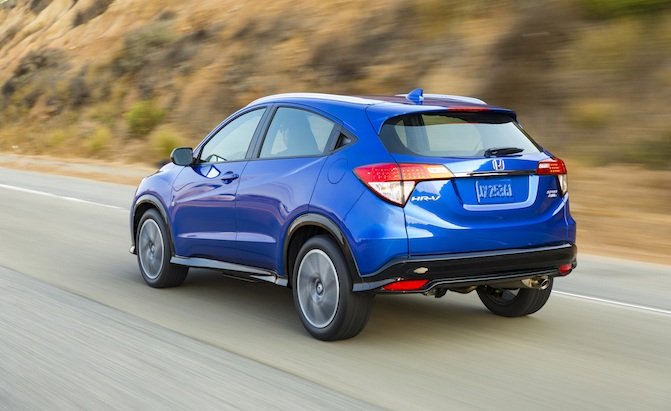
Bottom Line: the CR-V and the HR-V have similar driving dynamics. This isn’t such an important factor in this segment, but if you like sportiness and want a crossover, we’d opt for the CR-V with the 1.5-liter turbo. This engine is also easily tuned due to the large aftermarket community for the Honda Civic. Both handle average and have average steering feel.
ALSO SEE: CVT Transmission Pros and Cons
Technology
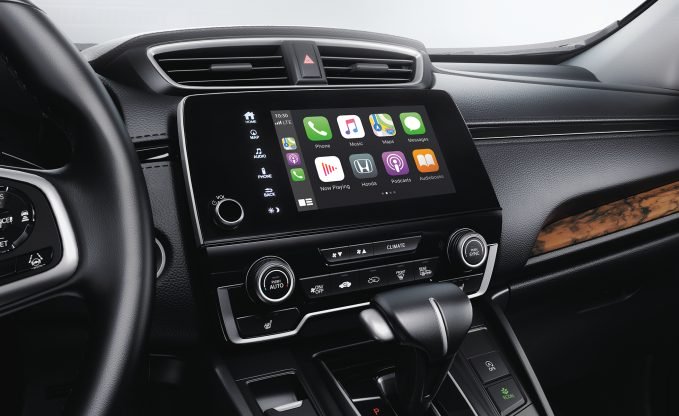
CR-V: The 2020 CR-V comes with the Honda Sensing safety suite as standard. Included in Honda Sensing is a collision mitigation braking system, forward collision warning, lane-keeping assist, road departure mitigation, and adaptive cruise control. Other standard safety systems include multi-angle reversing camera and auto high-beam headlamps. Blind sport detection though is available from the EX trim.
As for the infotainment system, the 7-inch display audio screen with Apple CarPlay and Android Auto is available EX trim onwards. The base LX variant makes do with a 5-inch unit sans CarPlay and Android Auto. In addition, two fast-charging USB ports in the back and remote engine start are also available EX trim onwards.
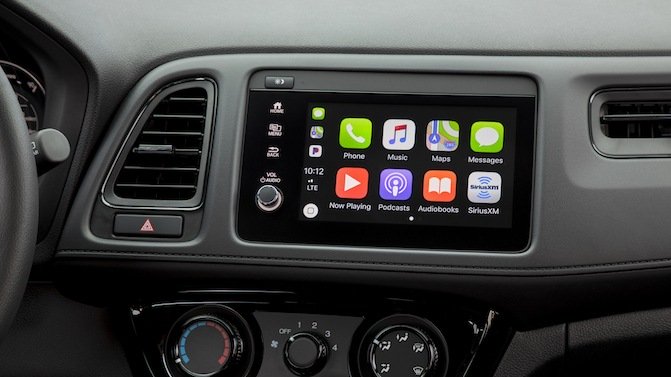
HR-V: The smaller HR-V is not far behind the CR-V in terms of technology. The HR-V is available with Honda Sensing since the 2019 model year, so driver assistance features like adaptive cruise control, road departure mitigation, collision mitigation braking, lane departure warning, and forward-collision warning, and lane-keep assist are available but from the EX variant onwards. A small 5-inch display audio system is standard on the HR-V, which at least has Apple CarPlay and Android Auto, but a 7-inch system is available as an upgrade. Instead of blind spot monitoring, which we think is more useful, the HR-V is available with LaneWatch, which is a camera on the right side mirror that shows you the blind spot when your right turn signal is on.
The new Touring variant gets some exclusive features like LED headlamps with auto on/off, HomeLink garage remote and the Honda Satellite linked navigation system with voice recognition and digital traffic display.
Bottom Line: The HR-V is not that far behind the CR-V in terms of technology, making it a great value. The CR-V has a bit of an edge with a few extra features, but we’re impressed by what the HR-V offers.
Pricing
CR-V: the CR-V starts at $25,050 before destination for the base LX model, making it quite a bit more expensive than the HR-V. The CVT and AWD add $1,500 to the price tag. The 1.5-liter engine is now standard. The range-topping model, the CR-V Touring, starts at $33,750.
HR-V: the HR-V starts at $20,820 before destination for the base LX model. The CVT and AWD add $1,500 to the price. Honda has added the Touring variant to the HR-V lineup as the new top variant. It is only available with AWD and starts ar $29,985.
Bottom Line: this is where the CR-V and HR-V truly show their differences. The CR-V is quite a bit more expensive than the HR-V even in base form, even though they’re pretty equally matched in terms of features and available options. A base or mid-level CR-V might be a better deal than a well-equipped HR-V, so be sure to consider price overlap when shopping between segments.
The Verdict: Honda CR-V vs Honda HR-V
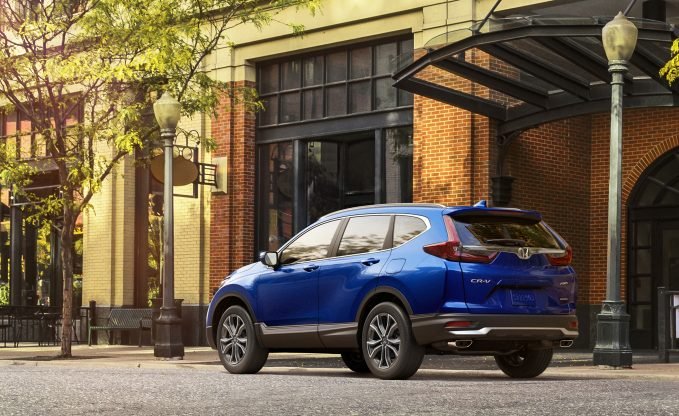
2020 Honda CR-V Hybrid
Both the Honda CR-V and HR-V are relatively popular and for good reason. We wouldn’t hesitate to recommend either of these crossovers to our friends and family.
Honda has sorted out the problems with the 1.5-liter turbo engine now, and their confidence is apparent as the company has ditched the old faithful 2.4-liter motor altogether making the 1.5 the only engine available on the CR-V.
As for the HR-V, the tiny four-pot still makes decent power, returns good fuel economy and is reasonably refined. The most important thing is that the HR-V is now available with many of the same safety features as the CR-V, so the gap between them is very small now.
If you need more space and want something reliable to get you to and from work, the CR-V with the 2.4-liter engine will be well suited to you. If you don’t need the extra room, you can save quite a bit of money by opting for the much smaller HR-V without making too much of a compromise on tech and features.


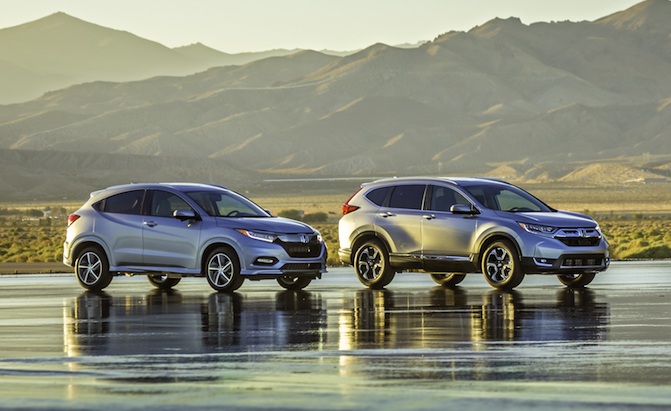
Leave a Reply